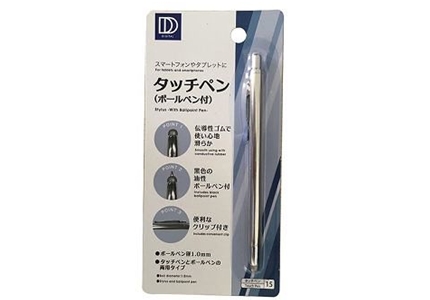Handwriting keyboard apps for mobile phones are a god-send for me. I find that the act of using pen and paper do wonders to my productivity. The smaller screen estate on smartphones makes it a challenge to type without error. Multilingually, accuracy can also be tricky despite the autocorrect functions. Slide keyboards are getting better, but they’re still my second choice when I have my stylus handy.
Unfortunately, I’m a cheapskate most of the time. Thus, finding a quality free version of this app feels like finding a needle in a haystack. To add to this complication, I don’t even own a mobile phone with a built-in stylus. I resorted to buying Daiso-standard stylus instead.

These pens are handy when I often switch to writing on an actual paper notebook. I refuse to buy a smartphone with a built-in stylus; it’s difficult and expensive to get a replacement pen. I also switch bags often, so I purposely buy several of these pens for each bag so that I’ll always have one handy.
With the mentioned limitations, here are two handwriting-to-text apps that I use on my current smartphone, the Oppo A93.
App 1: Grafitti Pro
I blogged in a previous post about how Grafitti was one of my must-have Android apps. This PalmOS-reminiscent app remains my choice handwriting keyboard app for my smartphone.
But hold on. Before you think about installing this, be aware that Grafitti Pro has not been updated for an extremely long time. On top of that, enabling it as part of your keyboard option is not quite straight forward. It’s also been taken over by a Chinese company, and you know how Chinese apps are when it comes to security issues.
Even so, I stuck to Grafitti because I find writing on it to be faster. Sure, the specific letter strokes take some getting used to. Still, the learning curve is low, and is responsive as soon as I finish writing each letter.
App 2: Gboard Handwriting layout
If you updated to the latest Gboard, you can easily switch to the Handwriting layout.
I suppose for short words, the handwriting layout works well. However, I don’t like that I have to wait a second for the screen to extend on the right to create more space. Due to this, writing feels slower. I could do better on the swiping layout.
As I mentioned, I’m not using an actual stylus, but rather a rubber-conductive stylus tip. This makes writing more problematic, because the tip is not as smooth as a typical built-in stylus. For smartphones with built-in stylus, Gboard Handwriting layout may work better for you.
How about you? Do you use a handwriting keyboard app for your phone?
Check out my other posts: « Duplicate Flutter project using Android Studio / Easiest Realtek USB FE Family Controller fix »